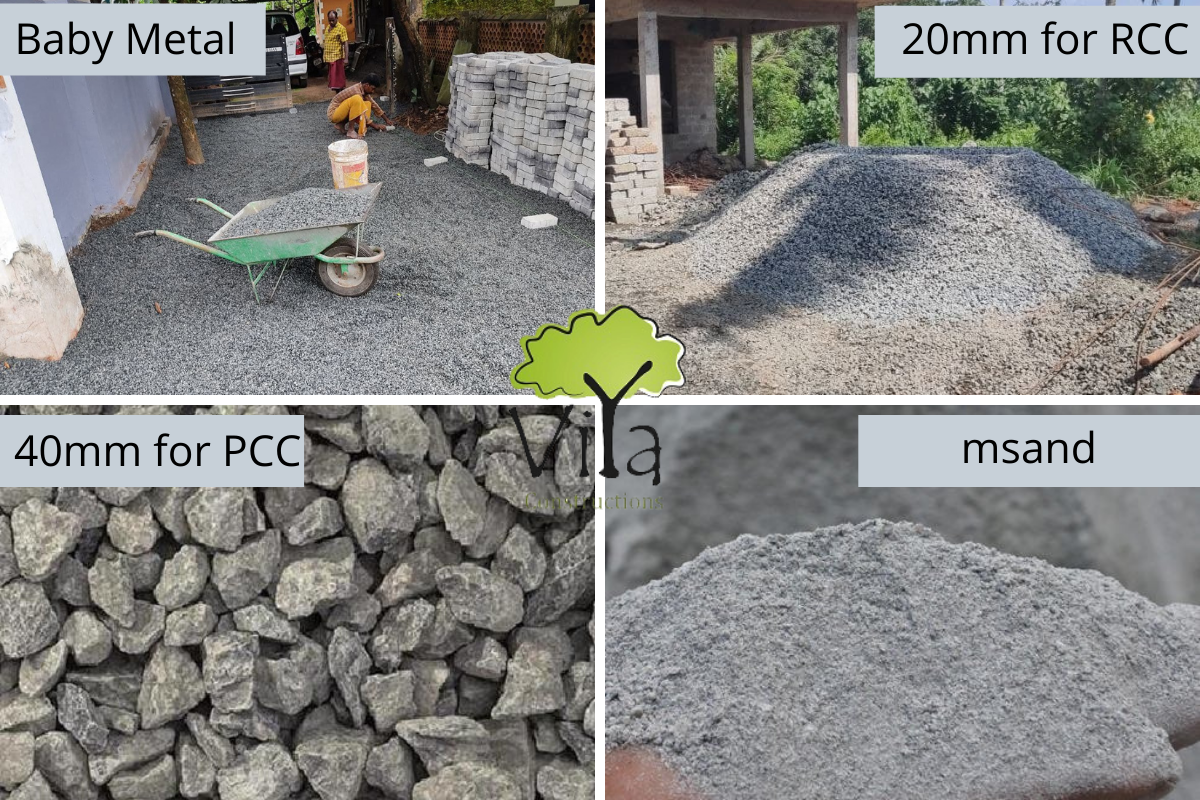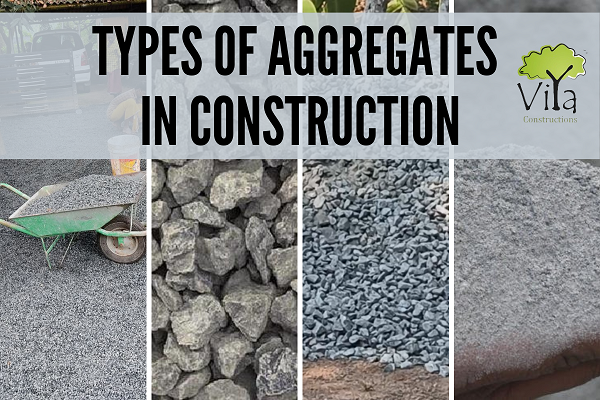Aggregates in house construction
Aggregates or crushed stone is one of the major raw materials used in the construction of a building. Also known as “metal” in the construction parlance, aggregate is a key ingredient of concrete, along with cement, sand, and water. In general, aggregate forms about 70-80% of the volume of the concrete. Therefore, it can be undoubtedly said that the strength of concrete depends primarily on the strength of the aggregates used.
Aggregates are formed by crushing quarry stones in a crusher and grading it to different sizes.
Types of aggregates
Based on size, aggregate can be broadly classified into two groups – fine aggregates and coarse aggregates
Commonly used for construction purposes are aggregates of sizes 4mm, 6mm, 20 mm and 40 mm. Each one of these grades of aggregates have their own purposes, for instance the 4mm aggregates are used for tarring purposes and landscaping.
6mm aggregates also known as baby metal is used for landscaping purposes, interlocking tiles etc
20 mm aggregates are used for RCC (Reinforced Cement Concrete) mix and 40 mm aggregates are used for Plain Cement Concrete (PCC)
Aggregates of size 4.75mm or lower are considered as fine aggregates and the one above 4.75mm are known as coarse aggregates.

Characteristics of aggregates
Now let’s look at some of the important characteristics of aggregates
- Strength
- Size
- Shape
- Surface texture
- Grading
- Cost
Strength
Aggregate should be chemically inert, strong, hard, durable, of limited porosity, free from adherent coating, clay lumps, coal and coal residues. It should not contain organic or other matter that may cause corrosion to the reinforcement or impair the strength or durability of the concrete.
The strength of concrete depends upon the strength of the aggregate. Granite aggregate provides greater strength than pumice or burnt clay aggregate.
Size
The size of the coarse aggregates used depends upon the purpose for which it is used. The coarse aggregate used must be small enough to enable it to be worked between and around all reinforcements and into all corners of the work.
For RCC work the maximum size of aggregate is limited to 20 mm to 25 mm.
Shape
Aggregates come in different shapes – round, irregular, and angular.
For a concrete of given workability, round aggregate requires the least water-cement ratio. However, rounded aggregates do not have high interlocking capability and therefore not recommended for high strength concrete. They are available in the form of seashore gravel.
Angular aggregates require the highest water cement ratio. They have very good interlocking properties and therefore considered a good ingredient for high strength concrete. For house construction purposes, angular aggregates are the commonly used option.
Irregular aggregates rank somewhere in between the round and angular aggregates in terms of interlocking properties and strength.
Strength of aggregates
Similarly concrete made with aggregates of rough surface is stronger than that with a smooth surface.
Grading of aggregate greatly affects strength and imperviousness of concrete. If the coarse and fine aggregates are well graded, the percentage of void in the concrete is considerably reduced. The voids of the fine aggregate are then filled using the cement paste while voids of coarse aggregate are filled with the mortar consisting of sand, cement, and water.
Aggregates must be clean and free from clay, silt and find dust etc so that proper mixing is possible. Dirt or other adherent coating would weaken the adhesion between individual particles in hardened concrete.
The imperviousness of aggregate is an essential requirement especially when the concrete is used in water retaining structures. This is also essential in other RC works of permanence, otherwise air and moisture would penetrate with the result that outer concrete would spall out.
Coarse aggregates
The material retained on a 4.75 mm sieve is known as coarse aggregate. Crushed stone and natural gravel are the most common materials used as coarse aggregates for concrete. They are obtained by crushing various types of granite. When very high strength concrete is required, a very fine grained granite is the best aggregate. Coarse grained rocks make harsh concrete and need high proportion of sand and high water/cement ratio to get reasonable degree of workability.
Harder types of sandstones having fine grained texture are suitable as coarse aggregate. However, you should be very careful while using softer aggregates as the concrete made with sandstone aggregate gives trouble due to cracking because of high degree of shrinkage.
Similarly hard and close grained crystalline limestones are very suitable for aggregate. Even though it is inexpensive, such aggregates should be used only in plane concrete.
Fine aggregates
Materials smaller than 4.75 mm are known as fine aggregates. Natural sands are generally used as fine aggregate. Sand can be obtained from pits, river lake or sea shore. When obtained from pits, the sand should be watched to free from clay and silt. Sea shore sand may contain chloride which may cause efflorescence and corrosion of reinforcement. Hence it should be washed before use. Similarly if river sand contain impurities such as mud etc, it should also be washed before use.
